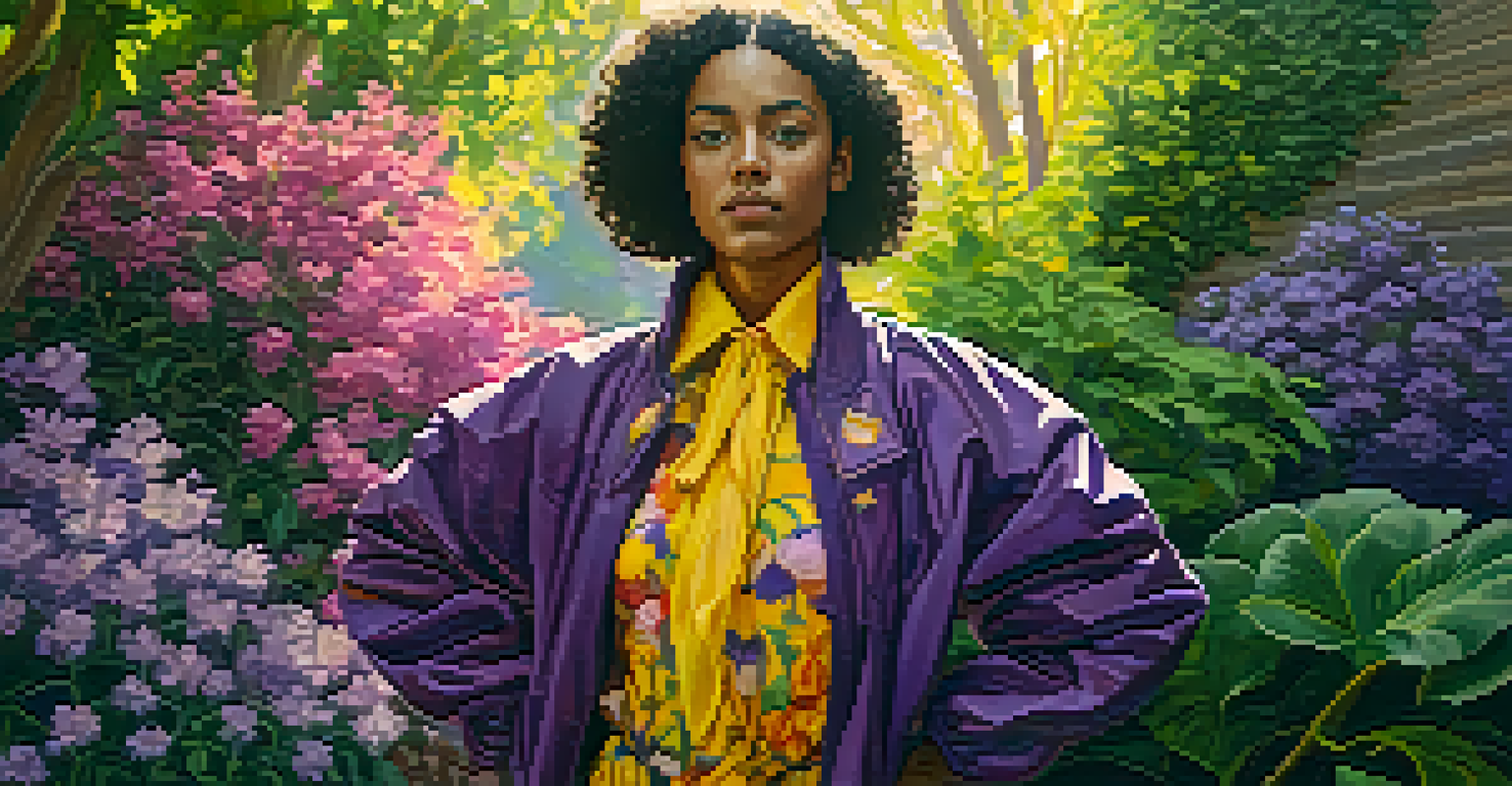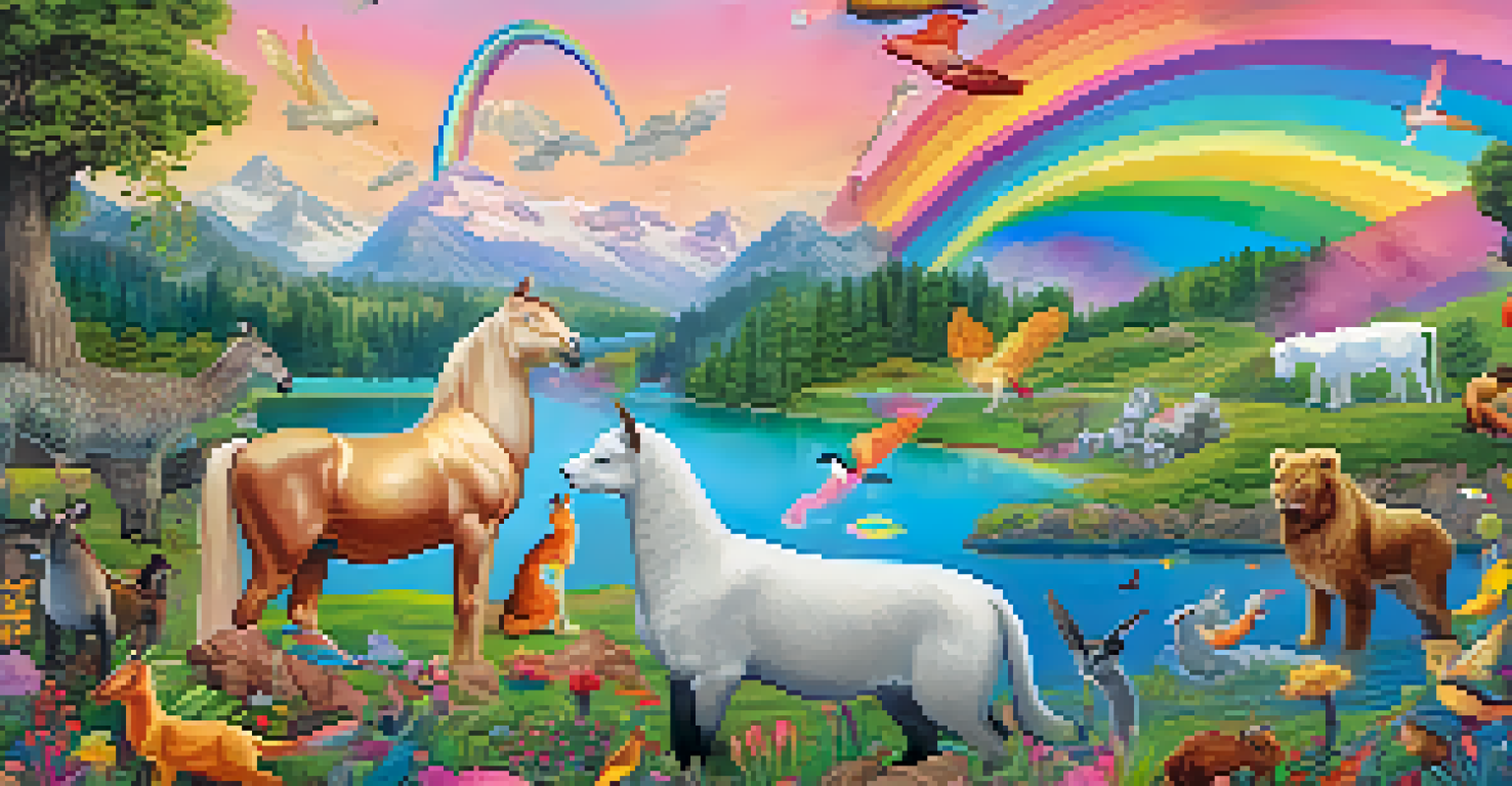The Influence of LGBTQ+ Artists on Gender Identity Art

Understanding Gender Identity Through Art
Art has long been a powerful vehicle for exploring complex topics like gender identity. It allows artists to express their personal experiences and challenge societal norms. Through various mediums, from painting to performance, artists can convey the fluidity and diversity of gender in ways that words sometimes cannot.
Art is a way of recognizing yourself, and of being recognized by others.
For many LGBTQ+ artists, their work serves not only as a form of self-expression but also as a commentary on the broader conversation surrounding gender identity. This helps cultivate a deeper understanding of how gender can be perceived differently by different cultures and individuals. Art can thus act as a bridge, connecting diverse perspectives and experiences.
By sharing their stories and experiences through their art, LGBTQ+ artists invite viewers into their world, encouraging empathy and open-mindedness. This is particularly important in a society where traditional views on gender are being challenged and redefined.
The Role of LGBTQ+ Artists in Social Change
LGBTQ+ artists have historically played a crucial role in advocating for social change. By creating work that highlights issues related to gender identity, they shine a light on injustices faced by marginalized communities. This activism is often woven into the very fabric of their artistic expression.

For instance, artists like Keith Haring used their platform to address the AIDS crisis, while also exploring themes of sexuality and identity. Their art not only raised awareness but also fostered dialogue around these critical issues, creating a ripple effect that inspires others to engage in the conversation.
Art as a Voice for Gender Identity
Art enables LGBTQ+ artists to express their unique experiences and challenge societal norms surrounding gender identity.
Through their art, LGBTQ+ artists challenge the status quo and push for a more inclusive understanding of gender. Their work encourages society to reflect on its biases and strive for a world that embraces diversity in all its forms.
Exploring Intersectionality in Gender Identity Art
Intersectionality is key to understanding the multifaceted nature of gender identity. Many LGBTQ+ artists explore how various aspects of identity—such as race, class, and sexuality—intersect and shape the experiences of individuals. By doing so, they create a richer and more complex narrative around gender identity.
The role of an artist is to make the revolution irresistible.
For example, artists like Zanele Muholi focus on the experiences of Black LGBTQ+ individuals, highlighting how race and gender identity can intersect in unique and often challenging ways. This approach not only broadens the conversation but also amplifies voices that are often marginalized within the LGBTQ+ community.
By incorporating the lens of intersectionality into their work, LGBTQ+ artists encourage viewers to engage with the complexities of identity. This deeper understanding fosters a more inclusive dialogue that celebrates diversity rather than homogenizing experiences.
Visual Representations of Gender Fluidity
One of the significant contributions of LGBTQ+ artists is the visual representation of gender fluidity. Through their art, they challenge rigid binary notions of gender and embrace a spectrum of identities. This is pivotal in reshaping how society perceives and understands gender.
Artists like Alok Vaid-Menon explore this theme through fashion and performance art, showcasing how gender can be expressed in myriad ways. Their work highlights the importance of breaking free from traditional gender roles and embracing authenticity.
LGBTQ+ Artists Drive Social Change
Through their work, LGBTQ+ artists highlight injustices and advocate for a more inclusive understanding of gender.
These visual representations not only validate the experiences of those who identify outside the binary but also educate the broader public. They create a space where fluidity and diversity are celebrated, encouraging acceptance and understanding.
The Impact of Digital Platforms on LGBTQ+ Art
In today's digital age, social media and online platforms have transformed how LGBTQ+ artists share their work. These platforms provide a space for artists to reach wider audiences, allowing them to showcase their perspectives on gender identity to the world. This democratization of art has opened doors for many who may not have had access to traditional galleries.
For instance, Instagram has become a popular platform for artists to share their stories and connect with like-minded individuals. This has fostered a community where ideas can be exchanged, and artistic collaborations can flourish, enriching the discussion around gender identity.
The accessibility of digital platforms also enables marginalized voices to be heard, amplifying the narratives of LGBTQ+ artists. This visibility is crucial in challenging stereotypes and fostering a more inclusive understanding of gender identity.
Case Studies of Influential LGBTQ+ Artists
To better understand the influence of LGBTQ+ artists on gender identity art, examining specific case studies can be enlightening. One noteworthy artist is Frida Kahlo, whose work often explored themes of identity, gender, and sexuality. Kahlo's candid portrayal of her own struggles with gender norms has inspired countless individuals to express their own identities.
Another powerful example is the work of David Hockney. His art often reflects his experiences as a gay man and challenges traditional notions of masculinity. By portraying intimate relationships and emotions, Hockney's work invites viewers to reconsider their perceptions of gender and identity.
Intersectionality Enriches Narratives
By exploring the intersections of race, class, and sexuality, LGBTQ+ artists create a more complex dialogue about gender identity.
These artists, among many others, have left an indelible mark on the art world. Their legacies continue to inspire new generations of LGBTQ+ artists to explore and express the complexities of gender identity through their unique lenses.
Future Directions in Gender Identity Art
As we look to the future, the influence of LGBTQ+ artists on gender identity art will undoubtedly continue to evolve. With the ongoing conversations around gender fluidity and inclusivity, new forms of artistic expression will emerge. Artists are likely to experiment with innovative techniques and mediums to convey their messages.
Moreover, the increasing acceptance of diverse gender identities in society will inspire more artists to share their experiences. This will not only enrich the artistic landscape but also foster a greater understanding of gender identity among the general public.

Ultimately, the future of gender identity art promises to be vibrant and dynamic, driven by the voices of LGBTQ+ artists. Their contributions will continue to challenge perceptions, inspire change, and celebrate the beauty of diversity in all its forms.